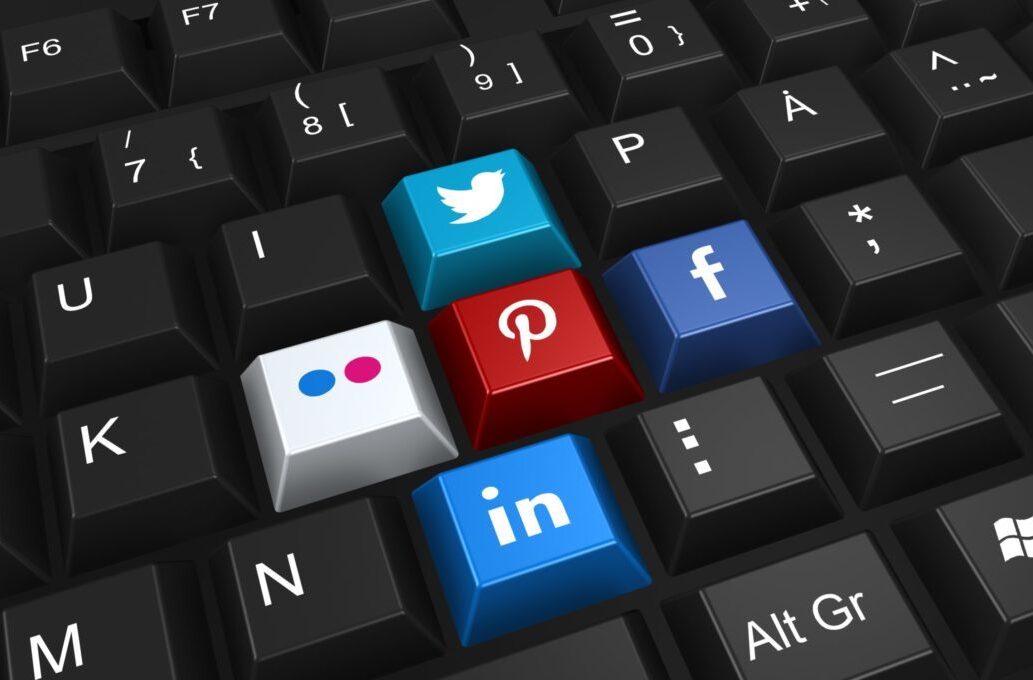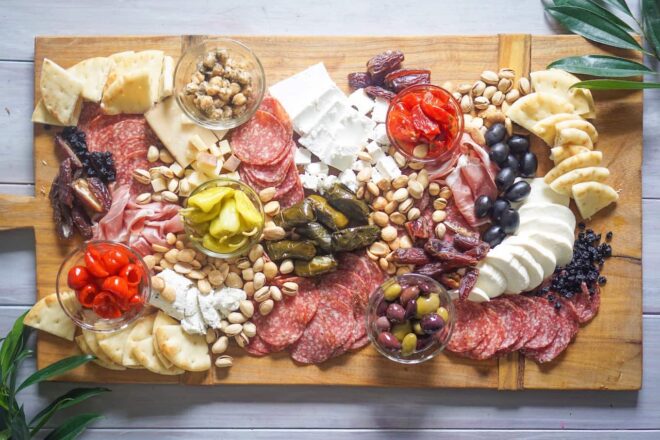Why we need the “social” of social media more than ever (Part 1)

The word has been out for a while. It is no longer an option not to use social media for business. But that’s old news… most business owners, small, medium, or large, already know the power of social networks, and the downsides of thumbing your organization’s nose at them. The questions today’s businesses are really asking: which platforms should I use, how, and when? And for those who dare ask, why?
A bigger gorilla has just entered the room, however. COVID-19 has upended communities across the country and throughout the world; many small merchants are facing uncertainty, downsizing, and sometimes closure. And yet, many are also rediscovering the heart and soul of their business, and adapting to the new reality with impressive speed. The kind of creative, strategic thinking usually driving startups is now blossoming in (home) offices nationwide, and more than ever it’s pulling on the power of relationships: the connections among business owners, employees, customers and clients, suppliers and vendors, and their larger communities.
Never have we needed the “social” of “social media” more than we do now.
This is a two-part series on social media for small businesses in the age of COVID-19. Here in Part 1, we look at the role social media is playing during the COVID-19 crisis, what that means for small businesses, and how you, as a merchant, can best approach your social media strategy.
In Part 2, we present a list of the main social media platforms with tips and best practices, and a brief overview of three tools you can use to optimize your social media presence.
Social distancing means more connection. Wait, what?
It seems contradictory and perhaps counterintuitive, but the more we are forced to socially distance to protect our physical health, the more we crave human connection to protect our mental and psychological health. Articles are beginning to pile up about that here, here, and here.
It doesn’t help that rates of loneliness have doubled in the U.S. in the past 50 years. Or that a former U.S. surgeon general declared loneliness and emotional well-being to be serious public health concerns.
We humans are deeply social animals. Always have been.
For small businesses, especially those that have historically thrived on person-to-person connections in their communities (read: coffee shops, restaurants, small grocery stores, beauty salons, daycares, auto mechanics), an order to shelter-in-place can sound like a death sentence. But here is where the power of virtual social connections can shine, and prove a life-saver, for merchant, employee, and customer alike.
If you already have a social media presence, fantastic. Your job now is to rev it up about a thousandfold. If you don’t, or your presence is small, or you haven’t seen the lift you were hoping for, there’s no time like the present to dive in—and this time with a little extra insight.
Before you post, listen
You might be raring to go and set up an entire week’s worth of posts. But remember what your elders always said… listen before you speak. This is particularly true—and relevant—now. Sensitivities and emotions are high; the isolation we’re feeling during this forced quarantine is driving many people to share more of their thoughts and sentiments than has historically been typical, even for a tech-connected society like ours.
Let’s unpack that.
This means the sharing index, if there’s such a thing (well, there is now that we coined the term…) or the volume of messaging, memes, images, likes, comments, and various other ways people can interact through social media, has gone through the roof.
This also means people are spending way more time on their little screens than probably ever before in the history of Homo sapiens.
This also means the rate of transmission of misinformation is higher than ever before (that “email from a doctor” about holding your breath to see if you have the virus? Myth.).
So what does all this really mean, for the small business owner?
Put simply, it means it’s a much redder ocean now. (Haven’t heard of the red ocean/blue ocean comparison? Nothing like the red pill/blue pill trope, we promise.) Your critically important COVID-19 related news, new store hours, or pop-up special promos, might just drown in a sea of Instagram challenges (push-ups anyone?).
But it also means more people than ever before are hungry to make that connection, and if your business doesn’t give it to them, an eggdog video will. We respectfully believe your business has a lot more value than eggdog videos (and that’s why we’re not linking to one in this article).
Bottom line is—and here is the key to it all—that if you know how to listen, if you’re willing to listen, you’ll begin to see what your customers, suppliers, and communities need—and what they want. What makes them anxious and what gives them hope. What they’re missing vs what they lack. One of our own merchants, Becky Sunseri of Tin Pot Creamery, says it best: “Small businesses are people.”
So spend some time scrolling through the social media posts of your followers as well as those you follow, organizations in your community, news outlets, even your local government agencies. Read the comments. Check out Facebook groups, Instagram stories, LinkedIn posts. Email newsletters. TikToks. Get a sense of the ocean you’re swimming in, so you can feel its every ebb and flow. This is the ocean you’ll need to navigate.
Understanding the what gives you insight into the why, and you can then translate that into the how.
To create or to curate
There’s a golden rule that has cast its benevolent glow on many an entrepreneurial effort. It’s the 80/20 rule, aka the Pareto principle.
Fun fact: the Pareto principle is named after 19th century Italian economist Vilfredo Pareto, who made important contributions to the study of income distribution and the analysis of individual choice, and who discovered that in many countries, 80% of the wealth was owned by 20% of the population.
The Pareto principle states that 80% of the effects come from 20% of the causes. In business, they say 80% of sales come from 20% of customers. For social media, experts recommend that 80% of your posts be engaging, creative, inspirational, informational. In other words, not intended to sell. The other 20% is where you can dedicate your content and messaging to drive sales. Because, after all, yours is a business.
Let’s drill down into that a bit.
You might have heard an alternate version of this 80/20 rule for social media: 80% should be third-party content, and 20% yours. This misses the point of engaging your audience. It’s not about where the content comes from, it’s about what story it tells, and how it helps you deepen, enhance, or enrich your relationship to, or connection with, the people and businesses in your social spheres. Whether or not the “80%” content is yours or curated from other sources is not critical. What’s important is that you’re the one sharing it, perhaps even offering your own take on it, and that it’s relevant for and speaks to your audiences.
Think of it this way: 80% of your social posts should enrich your network of relationships, and 20% should support your business. Makes sense doesn’t it? Imagine how you’d feel if your favorite coffee shop spent 80% of their time tweeting and posting about their amazing coffee. Sure, you love their coffee. But do you really want to hear about their coffee that often? After a while you’d stop paying attention to their feed—or worse yet, move on to a competitor’s social channel where they share fun videos of their baristas making their favorite latte art designs. And before you know it, you’re in the OTHER coffee shop every morning. Er, picking up curbside of course.
Then there’s the indisputable factor of how our brains work. Yes, at a fundamental level, we crave the familiar. It makes us feel safe and comfortable. But when we see or read something new, our neurons perk up and say, hey, pay attention, we haven’t seen this before.
All that to say… see why it’s a good idea to put your promotional posts in that 20% bucket?
As we said above, humans are social animals. Our actions are driven by decisions that are in turn motivated by our sentiments. And those sentiments—how we feel about a person or event, or a product, service, or brand—are shaped by our relationships and experiences.
Oh, one more thing. As you work on your own content, don’t worry too much about how professional it looks. Beautiful product images are great, but when it comes to the grittier stuff—the stories of your workers, the challenges you’re facing, or what you’re doing to stand up a new e-commerce website—it’s perfectly fine, and in fact often better, to simply be real. People are increasingly wary of over-produced content, especially video. Many are living a reality that is much harder and more raw than it was just a few months ago, and the media content that denies that reality can easily fall flat—or feel inauthentic or disingenuous. Not to mention that video or images that clearly suggest a large production budget was spent, might call into question how else those funds might have been (better) spent within the community.
In Part 2 of this post, we explore the mainstream social media platforms, from Instagram to LinkedIn. We highlight the primary distinctions among them, run through basic best practices, and offer pro tips. So be sure to read on!
REFERENCES
If you’ve read this far, you must be really curious where we found all those interesting facts. Well, since this is a post about sharing, we’re all about sharing our sources. And if you feel like sharing, as in, this post with all your friends and fellow business owners, we will most certainly not stop you.
- Pareto principle
- Loneliness in America
- Red ocean, blue ocean
- The eggdog video (It’s on YouTube. We told you we’re not linking to it)
RESOURCES FOR SMALL BUSINESSES
Related Posts
Quick Service Restaurants (QSR)
How to market your quick service restaurant’s catering business for special events
Navigating business success through effective CRM strategies
Popular Topics
Stay in touch
Sign up and learn more about Clover.
Thank you for your subscription!
More posts about starting a small business
eBook





